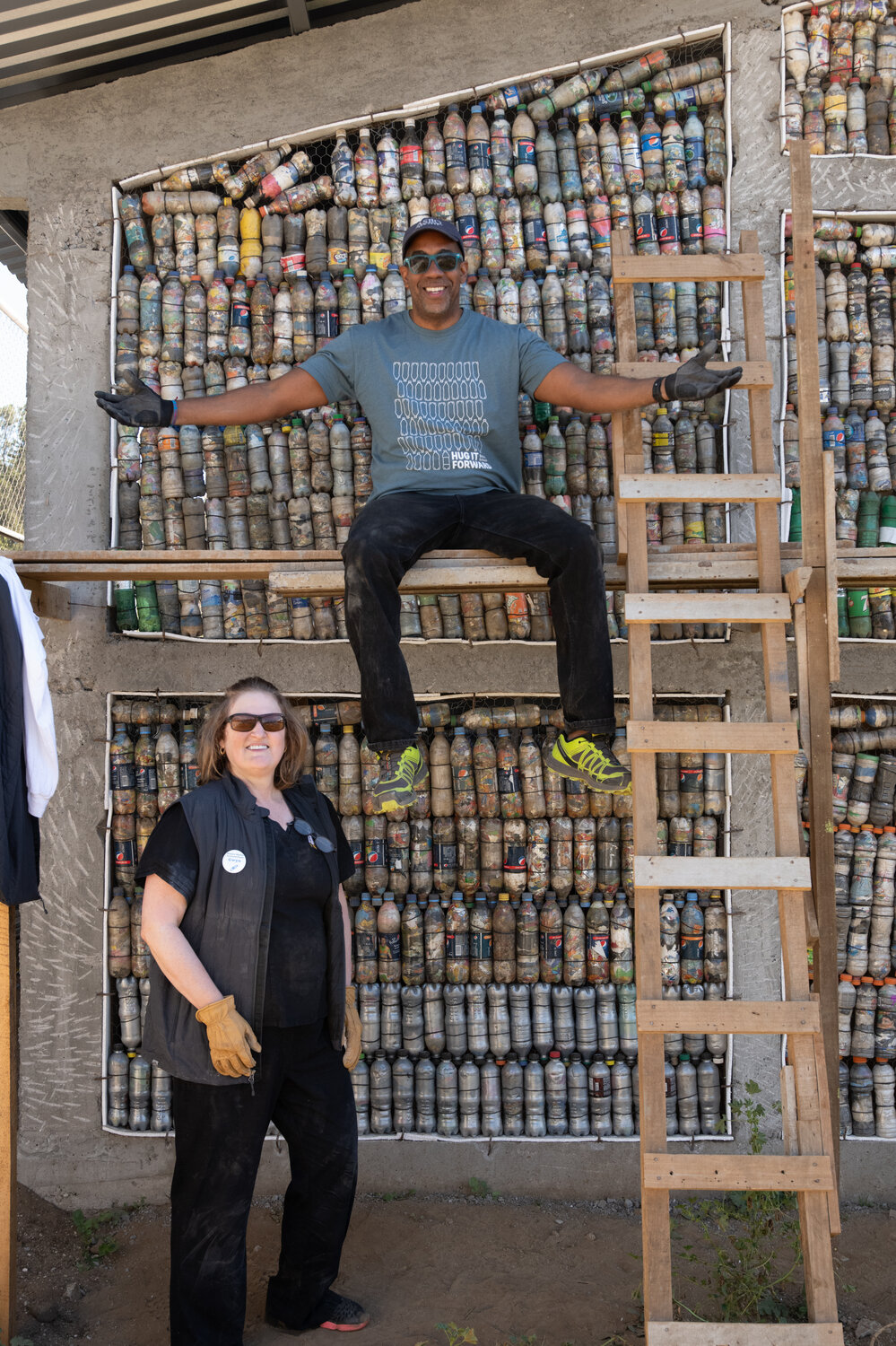This Valley Stream educator helps build 'bottle school' in Guatemala
For a week at the start of the year, Jack Mitchell traded Valley Stream’s familiar suburban scenery for the sun-bathed, sloping grasslands of Xetapan in Chimaltenango, Guatemala. It wasn’t your run-of-the-mill leisure trip, either. The assistant superintendent of business for Valley Stream District 24 accompanied a crew of educators on a quest to build a school, set to be the home for about 90 to 100 local students.
The team of volunteers, hosted by Lifetouch Memory Mission, came from all parts of the United States and Canada. For more than 20 years, Lifetouch has offered its volunteers a chance to serve communities the world over, noted Jan Haeg, Lifetouch’s manager of community relations.
Mitchell, who was roughly 2,000 miles from home, was eager to turn his gaze away from financial red tape and administrative paperwork and look toward the people of Xetapan.
The Takeaway
- Jack Mitchell, assistant superintendent of business at Valley Stream District 24, embarked on a journey to Xetapan, Guatemala, where he and a team of volunteers collaborated to construct a school using a unique method involving "bottle bricks" made from plastic bottles stuffed with inorganic waste.
- Local children played a significant role in collecting bottles, highlighting the communal effort to improve their educational environment and create a better future despite facing challenges such as holding classes in inadequate facilities.
- Mitchell hopes to continue fostering connections between Valley Stream District 24 and Guatemala, embodying the spirit of humanitarianism and empathy beyond borders.
Generated through Open-AI
Donning a cap and work gloves, he and his Lifetouch crew joined volunteers from Hug It Forward, a grass-rooted educational empowerment organization. The organization has been spearheading the building process of dozens of classrooms in Guatemala with an eye for sustainability through its unique construction method: bottle bricks.
Plastic bottles, concrete dreams
The bottle bricks are so named due to the fact they’re not conventional bricks but plastic soda bottles, thousands of them, each deliberately stuffed with inorganic waste. Once stacked and packed into tall columns, securely fastened between layers of chicken wire connected to a metal frame, the bricks are enveloped in concrete and finished with a coat of paint. Thus, the classroom walls are made.
“The bottles act as a form of insulation,” said Haeg, who noted they weren’t the only volunteer group involved. “Our job as the Lifetouch group and what Mitchell focused on was tying the bottles.”
From the project’s planning to conception, each phase of construction passed through many hands, where the whole community pitched in, especially the children.
“The commitment the community makes is to collect and stuff 10,000 plastic bottles collected with inorganic trash,” Haeg said. “So it’s, you know, the plastic bags from the grocery stores; it’s chip bags; it’s Styrofoam, you name it. It takes about two hours to stuff one bottle, so a community needs to invest about 20,000 hours to collect, clean, stuff, and store the bottles for the new classrooms.”
While the adults often help mix the sand and cement at the construction site, it is the children who scour their neighborhoods collecting the bulk of the bottles. It, too, is personal for them.
Ever since their former school building was condemned, noted Haeg, the students have been holding classrooms within a beaten-down, remote building— not exactly the ideal conditions for a school, but a better future, she argues, is weeks away.
Later this spring, the new “bottle classrooms” the local families and international volunteers helped create will welcome its first crop of students who will almost certainly go to school in a place sturdier, nicer, and, as an added benefit, more environmentally conscious than before.
Empathy, connection and cultural exchange in Guatemala
As for Mitchell, who has since returned to Valley Stream, the experience he reaped from the trip stays with him. For volunteers there is the emotional pay-off found in helping those in need, but it goes further than that. Mitchell said he has found himself transformed.
He and his fellow volunteers toured Mayan ruins, entered homes, and learned the exacting art of tortilla-making. At the end of each day, volunteers sat together and debriefed on the day’s events. “We got to see the teachers and what they were about, and the kids were so happy,” said Mitchell.
Even in a school district that holds up the values of inclusivity and community as pivotal, there was much to learn from the sense of natural closeness and intimacy displayed by the families there.
“The people didn’t care about class status, didn’t care about how much money you have or where you live,” said Mitchell. “I think we’ve forgotten about how to build meaningful relationships with that pure love for humanity. The people here showed so much generosity to us total strangers. Our society seems to have lost that.”
In one of the most intimate moments of the whole trip, the students who’ve never posed for a school photo let alone seen their likeness in a photograph before, were, finally, given the chance. Mitchell was on hand to snap some photographs.
Despite this being Lifetouch’s final mission, Mitchell hopes Valley Stream District 24 will carry on that same humanitarian spirit by connecting its students with children from Guatemala and possibly sending teachers over to help build schools.
“This wasn’t about us volunteers shining, but deepening our connections with these families and serving them in the way they needed us to serve,” said Mitchell. “We gravitated to these people and their culture and it was so simple and wholesome.”
Have an opinion on this article? Send an email to jlasso@liherald.com.

 43.0°,
Partly Cloudy
43.0°,
Partly Cloudy 




